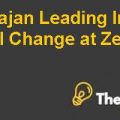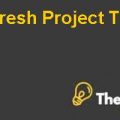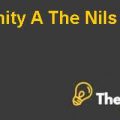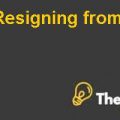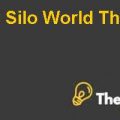
The Ethos Institute (A): Challenging Business to Become the Vanguard of Social Progress in Brazil Case Solution
- What was Ethos’ goal? Who was its target audience? How was a communications strategy used in service to this goal? Why was utilizing the media necessary?
Answer: The aim of Ethos was to develop the Corporate Social Responsibility (CSR) which should not be limited to its organization but to the all private sector working in the Brazil. Moreover, Ethos wanted to prevent racism in Brazil and protect the social and political environment of the country. For the purpose of attaining its goal the audience, which Ethos targeted was the private sector.Moreover, Abrinq Foundation, the founder of Ethos published that the organizations would stop hiring children as employees. However, it would not immediately stop the working of child labor in the organizations instead the organizations would formulate strategies in order toprevent child labor and to replace them with parents to work instead of the children. The publication also announced that the organization will face severe consequences if it does not follow the orders. It was necessary to use media in order to abide organizations to prevent the environment of Brazil and to fully participate in theobligations.
- What were some of the advantages and obstacles Ethos faced?
Answer:Ethos benefited from the CSR and faced numerous difficulties as well. The measure benefit Ethos attained from the movement was the lessening in the child labor force in the organizations. Moreover, the other benefit which it got from the CSR movement was that it got the military regime in order to provide a way to the democracy. Furthermore, the business society of Brazil obliged towards social responsibilities through the CSR movement. However, the blockage that Ethos faced appeared prior to the origination of the movement. Moreover the Grajew and Emerson, among the founders of Ethos, were declared as the leftist of FIESP as well as they were expelled from the group.The CSR organizations were initially engaged in collaborating to the CSR management. The businesses got involved in the social responsibility campaign. Consequently, the companies also faced hurdle towards tracking activities which were essential for their businesses.
- How did Ethos leverage “associate” companies? Why was this important?
Answer:As the board for CSR movement was formed, the private sector was targeted and accompanied by Ethos in Corporate Social Responsibility (CSR) movement. Moreover, the Government and non–profit organizations were not included. Ethos needed to be careful as the entrepreneurs should not ponder on the government and non – government organizations (NGOs) since there were eventually hurdles to achieve the goal. Moreover, the NGOs were financed through government in Brazil. Hence, the public should not be involved by the entrepreneurs for sustaining the envrionment. As a result, the businesses were empowered in order to finance the CSR movement. The companies had to sign for the commitment letter in this regard. Furthermore, for the small firms, 40 reals (half of a dollar) were provided and for the large firms they ranged to 1500 reals. The sponsors of the organizations had to be utilized for different projects and publications. From the budget the prize had to be awarded such as for the best journalism and the best graduate award. Moreover, 20% of the budget had to be allocated for the rewards. Nonetheless, 10% was allocated for annual conference fees..................
This is just a sample partial case solution. Please place the order on the website to order your own originally done case solution.


